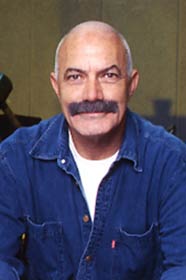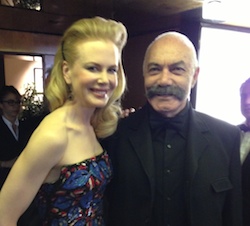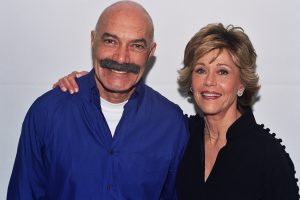A sweetly gentle, offbeat lyrical fable, “Lars and the Real Girl” emerges as the biggest surprise of the movie year to date, a small, well-written, well-acted fairytale that's grounded in reality and touches all the right emotions without being too touchy-feely. Considering the film's premise, a shy, emotionally awkward youngster who falls for a life-size silicone doll that's “anatomically correct” (as he says), “Lars and the Reel Girl” deserves credit for never sliding into the sleazy, creepy, or campy, and never titillating audiences in sensationalistic ways.
As the lead, Ryan Gosling gives yet another astonishingly subtle performance in a tough and demanding role (he's in almost every scene), again proving that he is the most versatile (and least mannered) thespian of his generation. As a follow-up to his Oscar-nominated turn, playing the drug-addict teacher in “Half Nelson,” his turn here is equally impressive; with some luck, it should earn him a second, consecutive Best Actor nomination.
But the real revelation (and even shock) is that the film is so beautifully directed by Craig Gillespie, the helmer credited for the current “Mr. Woodcock,” one of the worst films of the year (though to be fair, David Dobkin did a lot of reshoots on that much-delayed picture and it's impossible to know who did what). Go Figure! “Lars and the Real Girl” is exactly the opposite from the crass, banal, and childish “Mr. Woodcock.” New film, which registers as a 1980s indie (in the most positive way), is a gentle, subtle, sharply observed serio comedy that never falters in tone, which is tricky considering the plot.
The quirky, idiosyncratic tone should make the film, which premiered at Toronto Film Fest, a favorite in the domestic and global art house circuit. But I am also confident that, with strong critical support and positive word-of-mouth, “Lars and the Real Girl” could become a cult and even date movie, due to its largely gentle touch and romantic interludes later in the saga between Lars and a real-life co-worker.
Nancy Oliver's tale is set in the winter in a small, Midwestern town that feels like Minnesota (the feature was shot in Canada's Ontario). The first reel introduces three characters, two siblings, elder Gus (Paul Schneider) and younger Lars (Gosling), and Gus's pregnant wife Karin (Emily Mortimer). It's quickly established that there is not much rapport between the Lindstrom boys, with both still feelings the effects of their mother's death at Lars' birth, and raised by a rigid, taciturn father who's passed away.
However, whereas Gus has gone to a rather normal life, maturing as a young man, brother Lars is painfully shy, living in the garage apartment behind his childhood home and barely talking to Gus and sister-in-law Karin, who reside in the main property. Gus has pretty much given up on Lars, but Karin still tries to engage Lars in a conversation, and continues to invite him for dinner despite persistent rejections.
Holding a nondescript office job, Lars lives in isolation, avoiding any human contact. Lars' meager social life consists of weekly attendance at the local church, where he sits by himself and talks to no one, and minimal, functional conversations at his office with his co-workers. Margo (Kelli Garner), an office peer, shows interest and even attraction but to no avail.
Things change dramatically, when Lars introduces Gus and Karin to Bianca, a RealGirl, a beautiful, bosomy custom-ordered, life-size doll. He describes Bianca as a half-Danish, half-Brazilian missionary who's “on sabbatical to experience the world.” Familiar with every detail of her background, he relates how the religious and soulful Bianca was raised by nuns and is now using a wheelchair. The only request he makes is that the shy, virginal Bianca stays in their house's pink room so that her modesty is not violated.
Needless to say, Bianca's presence puts strains on and changes the entire family dynamics. The married couple reacts differently to Lars' problem. While Karin shows compassion and understanding, hubby Gus simply refuses to believe his eyes, immediately labeling his Lars as wacko if not psycho. Representing the straight, conventional outside world, Gus is suspicious and angry at his brother's insanity, also fearing the ridicule and ostracized reaction from their neighbors and town's residents.
Soon, the couple consults Dr. Dagmar Berman (a radiant Patricia Clarkson) the resident family physician, who suggests weekly treatments, but surprisingly advises Gus and Karin to “go along with it.” Turns out that Dagmar bears enough emotional baggage of her own–she is a young widow with no children or friends.
It's to the credit of writer Nancy Oliver (“Six Feet Under”) that she doesn't treat Lars as a clinical or pathological case; just a mental disorder medically known as haphephobia (fear of being touched). Quite refreshingly, the dreaded weekly visits become eagerly anticipated encounters for both Lars and Dagmar, with each being emotionally rewarded.
It's a relief to report that there is no conventional progress or psychobabble, the kind we are accustomed to see in Hollywood movies, such as “Ordinary People,” or “Good Will Hunting.” In due course, Dagmar is able to reach and touch Lars in unexpectedly moving ways that involve both verbal and physical disclosures.
If the film is slightly disappointing in the later chapters, it's because it turns into a coming-of-age saga, albeit one with a protag that is not a teenager but a young man; Lars is 27. This become clear in a long, verbal scene, when Lars asks Gus, “how do you know you're a man,” while his brother holds a knife and chops celery (two phallic objects). But that's a minor complaint, since “Lars and the Real Girl” is decidedly not your standard-issue Hollywood rite-of-passage yarn.
Scribe Oliver offers just the right amount of information about a guy who's been emotionally damaged, but needs to grow up on his own terms by taking his own singular road, with some help from others. What's truly remarkable about the screenplay is that Bianca's presence has positive effect on each of the characters, from the married couple to co-worker Margo (who herself plays with a teddy bear, at one point brought back to life by Lars) to the physician Dagmar, to a group of sympathetic residents, mostly elderly women, who embrace and take care of Lars without ever judging, patronizing or pandering to him.
With all my admiration for Oliver's multi-nuanced characterizations and splendid dialogue, and delicate, often lyrical touch of helmer Gillespie, the success of “Lars and the Real Girl” largely depends on the commanding performance of Ryan Gosling, who is in nearly every scene and finds the right balance between the quirky and bizarre, the serio and the comic- the fine, tenuous line between being emotionally dead and alive. (In a later piece, I'll comment on the feature's literal and figurative use of life and death as events, narrative principles, and symbols).
With half a dozen acting jobs to his credit, each vastly different from the other, as was evident in “The Believer” (as a neo-Nazi), “The Notebook” (romantic in a wet shirt), “Half Nelson” (dedicated but drug-addicted history teacher), and “Fracture” (bright if flawed lawyer), Gosling is easily the most brilliant actor of his generation, one that may become what Marlon Brando and Jack Nicholson were in their respective eras: Actors who reflect the zeitgeist.
Cast
Lars (Ryan Gosling)
Karin (Emily Mortimer)
Gus (Paul Schneider)
Dagmar (Patricia Clarkson)
Margo (Kelli Garner)
Mrs. Gruner (Nancy Beatty)
Cindy (Karen Robinson)
Credits
An MGM release of a Sidney Kimmel Entertainment, MGM Pictures production.
Produced by Sidney Kimmel, John Cameron, Sarah Aubrey.
Executive producers, William Horberg, Bruce Toll, Peter Berg.
Directed by Craig Gillespie.
Screenplay, Nancy Oliver.
Camera: Adam Kimmel.
Editor, Tatiana S. Riegel.
Music: David Torn.
Production designer: Arv Grewal.
Art Director: Joshu de Cartier.
Costume designers: Kirston Mann, Gerri Gillan.
Sound: Perry Robertson.
Running time: 105 Minutes.










